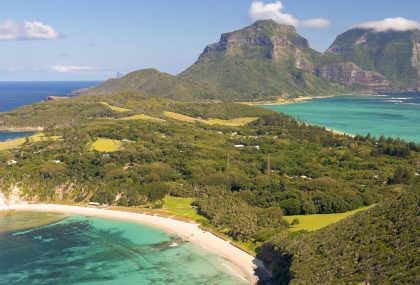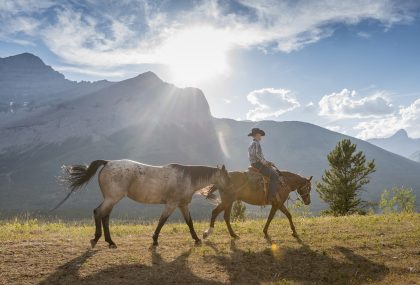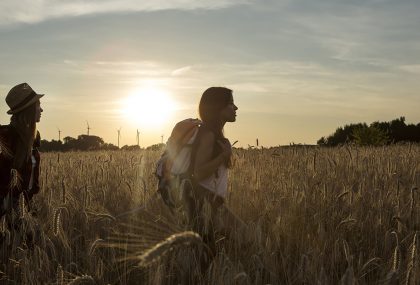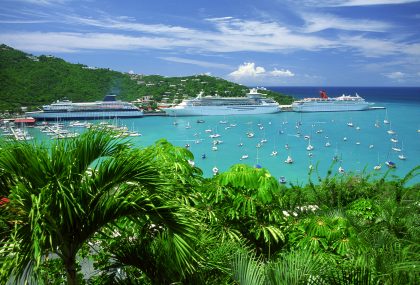Escape to an undiscovered island paradise
Leave the stresses of everyday life behind by venturing to destinations that few could locate on a map and even fewer have been…
Rubondo Island, Tanzania
There are few places left in the world that haven’t been disturbed by human development, but on Tanzania’s ecologically rich Rubondo Island, animals are still most definitely in control. Along with nine other uninhabited islands on the lake, Rubondo forms part of Tanzania’s least visited national park.
Located on Lake Victoria, the largest tropical lake in the world and largest lake in Africa, the 237 sq km island became a haven for relocated chimpanzees, elephants and giraffes, thanks to a conservation project in the 1960s. They co-exist happily in this protected habitat with several species of monkey, mongoose and bushbuck.
Stay at Rubondo Island Camp, the only accommodation on the island. Its ten luxury lodges have spectacular views of the lake and guests can wander down to the fresh water beach – but you won’t want to risk a dip here as hippos and crocodiles inhabit the waters. Accompanied by a guide, you can head off on a game walk, looking for elephants and chimps by listening for calls and following tracks, or sit back and wait for one of the 200 bird species found here to settle on date palms or in marshlands. Rubondo has some of the best fishing in Tanzania, with the legendary Nile Perch weighing up to 100kg being the ultimate catch. Hire a boat from the camp or try your luck from the beach or off the rocks.
Rubondo is an ideal place to start or end an East African safari, and far more adventurous than run-of-the-mill Zanzibar and Mombasa.
Getting there: Rubondo Island is about an hour by boat or a short hop in a light aircraft from Mwanza, Tanzania’s second largest city.
Lofoten Islands, Norway
An idyllic island escape doesn’t have to be bathed in sunshine year round, particularly in the case of Norway’s Lofoten Islands.
Rearing up from the North Sea like jagged teeth, these mountainous landmasses off the northwest coast of the mainland are ideal for hiking from June to August, when the sun barely disappears behind the horizon.
But visit during winter to experience the true windswept beauty of this remote archipelago. Base yourself in Svolvær and rent a car to explore the seven main islands connected by bridges and tunnels. Drive to one of the many pebbly beaches where water is clear as glass and colonies of birds congregate on the rocks.
As polar nights draw in, days are bookended by sherbet pink skies and the possibility of witnessing the Northern Lights increases.
For hundreds of years, cod fishing has provided the main form of industry and every February, fish are still draped over large triangular trellises to dry in the sun.
Getting there: There are daily flights from Oslo to the airports in Lofoten. But if you’re looking for a more leisurely travel experience, you can take the train from Oslo (22 hours) or a coastal steamer from Bergen. If you fancy topping and tailing your visit with a night in the Norwegian capital, the chic, centrally-located Thon Hotel Rosenkrantz is an ideal base.
Boipeba, Brazil
Coconut-strewn beaches with hammocks strung between palm trees may sound like the stuff of travel brochures, but there’s nothing commercial about the island of Boipeba in Bahia, northwest Brazil.
Even arriving here is an adventure; pick up a local speedboat taxi from the village of Torrinhas in northwest state Bahia and roar through mangrove-lined waterways eventually disembarking in warm, shallow water and splashing your way up the sandy beach. Alternatively, you can take a tractor across sandbanks from neighbouring island Morro de São Paulo.
At low tide, the reefs, which ring the island, form natural pools creating shallow baths for paddling, and turtles have often been known to visit this area. If you’re feeling energetic, though, swim to one of the island’s many floating oyster bars, where shellfish is sold from a wooden pontoon.
On land, there are numerous trails to follow through the Atlantic Forest, where hummingbirds dart between hibiscus flowers and primates squabble in the treetops.
Stay at one of the island’s simple, charming pousadas: the Pousada Santa Clara has a great outdoor restaurant and the Pousada A Mangueira has a pool and stunning clifftop views.
Until the mid-1980s, Boipeba had no mail delivery, phone service or electricity, and even now, residents do their best to avoid the outside world.
Everything closes at 9pm, and the only night-time illumination you’re likely to find is the starry sky overhead.
Getting there: The nearest city is Salvador, 150km north of Boipeba. From there you can take a small plane to the neighbouring island of Tinharé and make the short river crossing by speedboat. You can also make the journey from Salvador by ferry or catamaran.
Looking for more off-the-beaten track destinations? Find more inspiration here.



